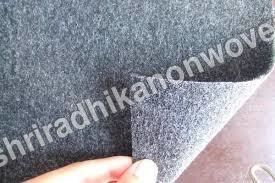Product Description
Needle-punched felt is a type of nonwoven textile that is created by mechanically interlocking fibers using barbed needles. The process involves repeatedly punching the fibers through a web or batt of loose fibers, entangling them together and creating a dense, strong fabric.
FAQ (Frequently Asked Questions) :
Q: What are the applications of needle-punched felt?
A: Needle-punched felt finds applications in various industries. It is commonly used in filtration systems, such as air and liquid filters, where its high porosity and ability to trap particles are beneficial. It is also used in geotextiles, automotive interiors, insulation materials, padding, acoustic panels, and craft projects.
Q: What are the advantages of needle-punched felt?
A: Needle-punched felt offers several advantages. It has excellent dimensional stability, high strength, and durability. It provides good insulation properties, sound absorption, and resistance to wear and tear. Needle-punched felt is also versatile, as it can be made from different types of fibers, including natural fibers like wool and synthetic fibers like polyester.
Q: How does needle punching work?
A: The needle-punching process involves repeatedly punching barbed needles through a loose web or batt of fibers. The barbs catch the fibers and push them through the layers, entangling and interlocking them together. This mechanical action forms a cohesive fabric without the need for adhesives or binders.
Q: What types of fibers can be used in needle-punched felt?
A: A wide range of fibers can be used in needle-punched felt production. This includes natural fibers like wool, cotton, and jute, as well as synthetic fibers like polyester, polypropylene, and acrylic. The choice of fiber depends on the desired properties and intended applications of the final product.




